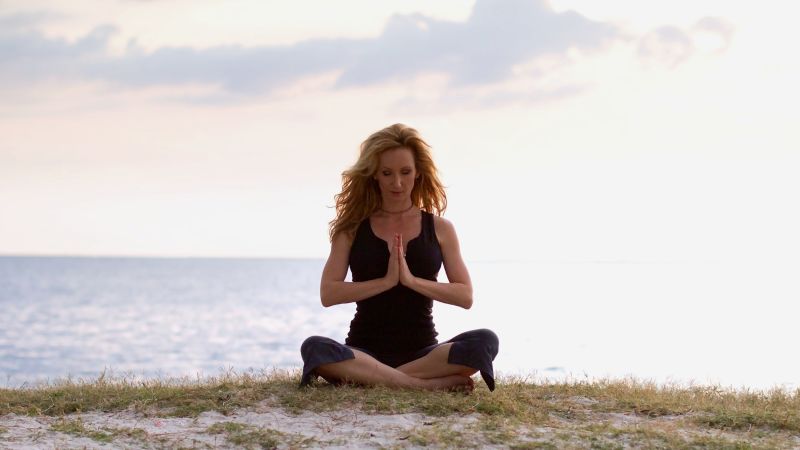
Editor’s Note: Dana Santas, known as the “Mobility Maker,” is a certified strength and conditioning specialist and mind-body coach in professional sports, and is the author of the book “Practical Solutions for Back Pain Relief.”
CNN
—
It’s easy to have a sense of gratitude when things are going your way or when holidays, like Thanksgiving, dictate it. But just as showing love shouldn’t be reserved only for good times and special occasions like anniversaries, being grateful shouldn’t happen only during optimal conditions or on designated days.
With just a little effort, you can find reasons to be grateful every day — and practicing gratitude regularly offers many health and wellness benefits that can boost your happiness year-round.
Stress is undoubtedly one of the biggest obstacles to long-term happiness. Thankfully (pun intended), one of the biggest benefits of being grateful is its power to mitigate stress. Numerous studies during the pandemic showed that— even in the face of significant psychological stressors — practicing gratitude had the capacity to reduce stress and improve mood.
Gratitude practices can also decrease depression and increase self-esteem. This mood and confidence booster is especially helpful for young adults experiencing stress, anxiety and depressive symptoms correlated with social media use.
One study of more than 1,000 high school students found that a daily gratitude practice fostered greater life satisfaction and motivation, while another study showed a link between gratitude and decreased suicide risk in college students.
Science has shown us that gratitude is an important, powerful skill for anyone at any age — and like any skill worth mastering, it takes practice.
Want to be less stressed and happier? Try one or more of the following four easy-to-follow daily gratitude practices listed below.
Create a gratitude album in your phone’s photo app and make a point once a day to add at least one image of something that makes you feel grateful. You don’t need to possess any special photography skills, and your images don’t even have to be pictures of actual things. You can include screenshots of meaningful text message exchanges, events on your calendar and the like. You can be creative but keep it simple so you don’t feel any pressure. Building your album should be a joyful practice.

Once you’ve started filling your album with images, make a point to replace some of your time scrolling through social media with time spent scrolling through the images in your gratitude album. Instead of comparing your life with others online, you’ll spend a few minutes every day appreciating all the good in your own life. You don’t need research to tell you how much better that would be for your mental health!
In a culture of immediate gratification, it can be difficult to slow down, be patient and find presence. Your breath is always happening in the present moment, so when you actually stop and focus on your breathing you can find presence. I recommend taking breathing breaks by pausing for just 90 seconds of deep breathing a few times a day.
Being in a state of gratitude can curb impatience, according to research. It’s easy to be thankful for your ability to breathe — considering that your breath is literally a life-sustaining force. During your breathing breaks, as you breathe deeply, concentrate on how grateful you are for the ability to take each breath. Combining a focus on breath with a state of gratitude will cultivate patience and create a sense of being calm and present.
Every day, tell someone — anyone — you are grateful for them, their help, their presence or anything good that comes to mind. You can write them a letter, send a text, call them or do it in person for even greater impact. Sharing gratitude with another person boosts happiness for both of you.
The benefits are even greater in romantic relationships, where research has found that partners are more responsive to each other’s needs and express greater satisfaction in the relationship after being on the receiving end of gratitude from their significant other.
What’s more, expressing gratitude to one another continues to have a long-term positive effect on relationships six to nine months later, findings showed.
At the end of each day, reflect on three things that make you feel grateful. Write them down. You can use a journal, a note app on your phone, or put them somewhere prominent where you will see them the next morning. I have a whiteboard hanging in our master bathroom where my husband and I each write down three things nightly as we get ready for bed. We get the benefit of being able to share our gratitude list with each other and go to bed feeling grateful. Even better, research has found a possible link between gratitude and improved sleep.
Your nightly list doesn’t have to include monumental accomplishments or expensive things. In fact, you should avoid focusing too much on acquiring things as materialism is linked to less happiness. Your list could include your health, time spent with friends or family, a good dinner, taking a nice walk, and more. When it comes to gratitude, the little things really are the big things.
